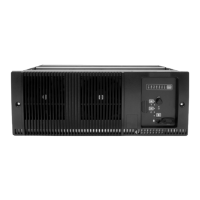TB9100/P25 CG/P25 TAG Installation and Operation Manual Installation 43
© Tait Limited March 2014
3.2 Installing and Setting up the CSS
To monitor and configure the base station, and to carry diagnostic tests on
it, you need the CSS. Follow the instructions on the product CD and install
the CSS on a PC.
To install the CSS, you need a registration key. You can obtain a key from
Tait. Please contact your technical support representative. If you have
previously installed a CSS, you can use the same key.
You also need to set up the PC so that it can handle network
communications with base stations. When the base station is on the bench,
the PC must use an IP address and subnet mask that is compatible with the
base station.
If the PC is a laptop that can be taken on-site, it can be set up so that it can
access any base station on the subnet. Maintenance staff use the CSS on their
laptops during visits to base stations so that they can adjust the configuration
of the base stations they are working on. So that technicians do not need to
change the IP address of their laptop every time they visit a different site, a
laptop subnet is allocated.
This subnet exists on all site LANs in the network but cannot be routed
across the WAN. All routers (unless there are multiple routers on a site LAN)
have the same address in the laptop subnet. This will be a secondary address
on the routers’ LAN connection.
Each laptop can be set up with an address in the laptop subnet and their
default gateway equal to the router address in that subnet.
Each router will redirect traffic originating on its local LAN and addressed
to the laptop network back to the LAN. New base stations and spare base
stations will also be allocated addresses in this subnet to facilitate their setup.
You need to tell the CSS which base stations it can connect to. This is done
by editing the host information file. Open conncfg.dat in a text editor or
select “Tools > Connections” and add names and IP addresses for each base
station.
Setting up CSS Access Codes
The CSS has three different privilege levels: Guest, Maintainer, and
Administrator. Access codes can be defined for the Maintainer and
Administrator privileges. This is done during the CSS installation process.
When you use the CSS, you automatically have the Guest privilege. If you
try to carry out an operation requiring the Maintainer or the Administrator
privilege, you are asked for the corresponding access code, if one has been
defined.

